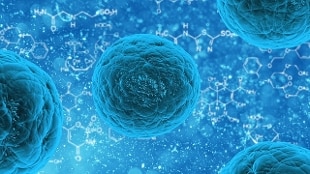- Stem cells on first 3 patients with multiple sclerosis
- Stem cells: closer new anti-Parkinson therapy. Human tests by the end of 2018
- Stem cells repair bronchi, in Milan the first case
- Stem from the tonsils to the liver
Share
18 February 2019Once the first anti-rejection stem cells: made 'invisible' to the immune system, which in this way does not reject them, thanks to the Crispr technique that cuts and glues the DNA. In the future they could be used for universal regenerative medicine therapies, suitable for any patient. This is indicated by the first laboratory tests done with human and mouse cells at the University of California in San Francisco, published in "Nature Biotechnology".The anti-rejection cells are induced pluripotent stem cells (Ipsc), that is, adult cells returned to children thanks to the reprogramming of their DNA. Consider the Holy Grail of regenerative medicine because of their extraordinary ability to differentiate into cells of various organs and tissues, they are usually grown in test tubes starting from adult cells taken from the same patient, in order to avoid the risk of rejection after transplantation.
This personalized approach, however, presents many problems as well as being long and expensive, it is not even easily reproducible, because many cells taken from the patients are refractory to reprogramming to overcome these obstacles, Californian researchers have thought to transform the stem cells induced into universal cells : they did it by deactivating three essential genes for the recognition of the cell by the immune system. The experiment was conducted on mouse and human cells, which have been shown not to cause rejection once implanted in mice with the immune system fully functional. "This is the first time celulas are engineered that can be universally transplanted and that survive in immunocompetent recipients without triggering an immune response," explains the study's first author, Tobias Deuse.
After this first success, the 'invisible' human stem cells were grown in a test tube and transformed into heart cells: implanted in mice with partially humanized immune systems, they showed a long survival and formed rudimentary blood vessels and a sketch of cardiac muscle, suggesting the possibility of being used in the future for heart regeneration.

